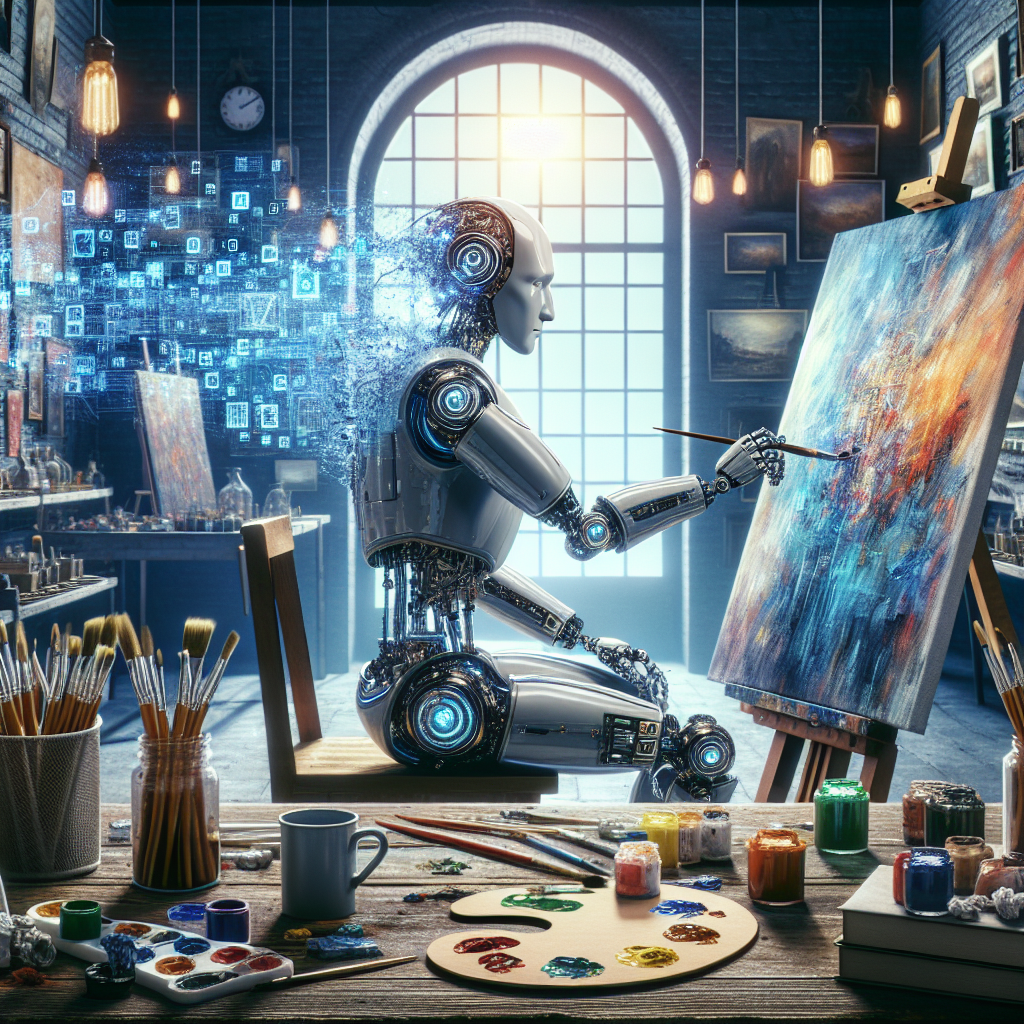Artificial Intelligence (AI) has been a hot topic in the tech world for the past few years, with applications ranging from autonomous vehicles to medical diagnostics. However, one area that is often overlooked when it comes to AI is the arts. AI has the potential to be a creative catalyst, driving innovation in the arts in ways that were previously unimaginable.
AI in the arts is not about replacing human creativity, but rather enhancing it. By using machine learning algorithms and neural networks, AI can analyze vast amounts of data and generate new ideas and possibilities that can inspire artists to create groundbreaking new works. From music composition to visual arts, AI is being used in a variety of ways to push the boundaries of creativity and innovation.
One of the most exciting applications of AI in the arts is in music composition. AI algorithms can analyze thousands of songs from different genres and styles and use that data to generate new compositions. This can be a valuable tool for musicians looking to break out of creative ruts or explore new directions in their work. AI can also be used to create unique soundscapes and textures that would be difficult or impossible to achieve using traditional methods.
Visual arts is another area where AI is making a big impact. Artists can use AI algorithms to generate new ideas for paintings, sculptures, and other visual works. AI can analyze images and patterns from different sources and use that data to create new and innovative designs. This can be a valuable tool for artists looking to experiment with new styles or techniques.
AI is also being used in the performing arts to create interactive experiences for audiences. Virtual reality and augmented reality technologies are being combined with AI algorithms to create immersive performances that blur the line between the physical and virtual worlds. This can create new opportunities for artists to engage with their audiences in unique and exciting ways.
One of the key advantages of using AI in the arts is its ability to process and analyze vast amounts of data quickly and efficiently. This can help artists save time and energy by providing them with new ideas and possibilities to explore. AI can also help artists overcome creative blocks by generating new ideas and directions for their work.
However, there are also challenges and concerns that come with using AI in the arts. One of the main concerns is the idea of AI replacing human creativity. While AI can be a powerful tool for artists, it is important to remember that it is just a tool and not a substitute for human creativity. Artists should use AI as a way to enhance their work, not replace it.
Another concern is the potential for bias in AI algorithms. AI algorithms are only as good as the data they are trained on, and if that data is biased or incomplete, it can lead to biased or flawed results. This is particularly concerning in the arts, where diversity and inclusion are important values. It is important for artists and developers to be aware of these biases and work to mitigate them in their work.
Despite these challenges, the potential for AI to drive innovation in the arts is vast. By combining the power of AI with human creativity, artists can push the boundaries of what is possible in their work and create new and exciting experiences for audiences. As AI continues to evolve and improve, we can expect to see even more groundbreaking work from artists in the future.
FAQs:
Q: Can AI really be creative?
A: While AI algorithms can generate new ideas and possibilities, true creativity is still a uniquely human trait. AI can be a valuable tool for artists to explore new directions in their work, but it is important to remember that it is just a tool and not a substitute for human creativity.
Q: How can artists use AI in their work?
A: Artists can use AI in a variety of ways, including music composition, visual arts, and performance. AI algorithms can analyze data and generate new ideas and possibilities for artists to explore in their work.
Q: Are there concerns about bias in AI algorithms?
A: Yes, bias in AI algorithms is a real concern, especially in the arts where diversity and inclusion are important values. It is important for artists and developers to be aware of these biases and work to mitigate them in their work.
Q: What are some examples of AI-driven innovation in the arts?
A: Some examples of AI-driven innovation in the arts include AI-generated music compositions, AI-generated visual art, and interactive performances using virtual reality and augmented reality technologies. These innovations are pushing the boundaries of creativity and innovation in the arts.

